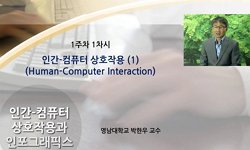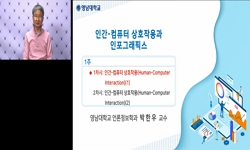This paper examines the mode in which Korean historical play interacted with historical novel and historical romance, as a way of exploring its origin and establishment. In the process of historical play emerging and developing as a sub-genre of moder...
http://chineseinput.net/에서 pinyin(병음)방식으로 중국어를 변환할 수 있습니다.
변환된 중국어를 복사하여 사용하시면 됩니다.
- 中文 을 입력하시려면 zhongwen을 입력하시고 space를누르시면됩니다.
- 北京 을 입력하시려면 beijing을 입력하시고 space를 누르시면 됩니다.

한국 역사극의 기원과 정착 : 역사소설/야담과의 교섭과 담론적 성격을 중심으로 = The Origin and Establishment of Korean Historical Play: Its Interaction with Historical Novel/Romance and Discursive Characteristics
한글로보기https://www.riss.kr/link?id=A101879174
- 저자
- 발행기관
- 학술지명
- 권호사항
-
발행연도
2010
-
작성언어
-
-
주제어
역사극 ; 교섭 ; 식민/민족담론 ; 〈마의태자〉 ; 최병화 ; 〈낙랑공주〉 ; 유치진 ; 〈개골산〉 ; 한상직 ; 〈장야사〉 ; 이동규 ; 〈낙랑공주〉 ; 〈낙화도〉 ; historical play ; interaction ; colonial/national discourse ; The Crown Prince in Hemp Clothes ; Choe Byeong-hwa ; Princess Nak-rang ; Yu Chi-jin ; Mount Gaegol ; Han S
-
KDC
800
-
등재정보
KCI등재
-
자료형태
학술저널
-
수록면
65-113(49쪽)
- DOI식별코드
- 제공처
-
0
상세조회 -
0
다운로드
부가정보
다국어 초록 (Multilingual Abstract)
This paper examines the mode in which Korean historical play interacted with historical novel and historical romance, as a way of exploring its origin and establishment. In the process of historical play emerging and developing as a sub-genre of modern drama in Korea, historical novel and historical romance played an important role as the source of materials. While history was deployed and recreated by novel, romance and drama/play and enjoyed its popularity, the socio-cultural context such as colonial rule and censorship, and the dominant discourse of empire and nation at the time had a big influence. The writers and intellectuals desired ethno-nation(minjok), the imagined community as a sublime object that could replace the absence of the state and found its representations in history. History granted sense of continuity and dignity to the colonized subject that could replace the sense of gap and rupture that they experienced under the colonial rule; hence, it was accepted by the colonized along with the national discourse that was believed to implode the imperial discourse. It seems that most common ways for the writers from colonial period to approach history were divided into two. One was to choose a material from history in order to get by censorship and speak out about and criticize the reality indirectly. In this case, historical play took on the form of ``a prehistory of present`` and an allegory of reality. Many historical plays in colonial period dealt with the fall of a state, which could be seen to reflect the writers` consciousness to contemplate the fall of a state and replace its absence with the restoration of the nation(minjok). The other was to appropriate history and represent it as a discursive construct. Appropriation of history took on two modes. One was the writer appropriating history in order to create an ideological fantasy of his/her own; and the other was to involve socio-cultural context or discourse of the time in the process of summoning and appropriating history. Among the three plays that are based on Yi Gwang-su`s The Crown Prince in Hemp Clothes, Choe Byeong-hwa`s Princess Nak-rang is imbued with the tendency to enlighten people that is characteristic of national discourse. In Yu Chi-jin`s Mount Gaegol, a prince of a ruined nation falling in love with a princess from his enemy state appears as a metaphor for the conflict between empire and colony, and an allegory for the colonized nation. Han Sang-jik`s History of Long Nights reveals the undisclosed affairs that happened inside the court by choosing to tell the story only through female characters. In doing so, it succeeds in producing the ambivalence of achieving the gender effects by feminizing colonial Joseon through Shilla court and creating envy for the powerful masculinity of Japanese empire. The 1930s was the time in which historical romance flourished as popular readings and popular performance alongside the success of historical novel. Yi Dong-gyu`s Portrait of Falling Flowers which dramatized a historical romance is worth paying attention to, as an example in which colonial discourse penetrated into literature. In this historical play, which was published in 1940 during the war footing, the representation of ``mother`` differs from its original historical romance. In the historical romance, mother emphasizes the happiness of her son over nation, but in Yi Dong-gyu`s historical play, mother is represented as the ``militant mother`` who educates her son to give up his life for greater good, hence showing signs of subsumption by colonial discourse. Historical plays in colonial period are melodramas that exaggerates and emphasizes characters` emotions and tears. However, when read in the context of colonial/national discourse and social context, they uncover a much more complicated political geography. They are problematic texts that casts a complex ``shadow`` interwoven with the ruptures and ambivalent signification of colonial/national discourse.
국문 초록 (Abstract)
본 연구는 한국 역사극 장르의 형성과정을 탐구하는 한 방식으로, 역사소설과 야담과의 교섭양상을 고찰해보고자 했다. 근대극의 하위장르로서 역사극장르가 발아하고 정착하는 과정에서, ...
본 연구는 한국 역사극 장르의 형성과정을 탐구하는 한 방식으로, 역사소설과 야담과의 교섭양상을 고찰해보고자 했다. 근대극의 하위장르로서 역사극장르가 발아하고 정착하는 과정에서, 역사소설과 야담은 역사극의 소재원천으로 중요한 역할을 했다. 역사가 소설, 연극(희곡), 야담 등에 소환되고 재현되는 창작 과정과 대중적 인기를 누린 데에는 식민지현실과 검열이란 사회문화적 컨텍스트와 당대의 지배적인 제국/민족 담론의 영향이 컸다. 당대 작가/지식인들은 국가의 부재를 대체할 숭고대상으로 민족이란 상상공동체를 욕망했고, 그 표상을 역사에서 발견했다. 역사는 피식민주체에게 단절이 아닌 연속성과 자존감을 부여하는 대상이었으며, 제국담론을 내파할 수 있는 민족담론과 결부되어 수용되었다. 식민지 시기 작가들의 역사에 대한 접근태도는 대체로 두 가지 방식으로 나타났다. 첫째는 검열을 피하기 위해 역사 소재를 선택하여 현실을 우회적으로 비판하고 발화한 방식이다. 이 경우 역사극은 ``현재의 전사``이자 현실의 알레고리 성격을 띤다. 식민지시기의 많은 역사극이 멸망사를 다루고 있는데, 이는 국가의 멸망을 사유하고 국가의 부재를 민족의 복원으로 대체하고자 한 작가의식을 대변한다. 두번째 방식은 역사를 전유하여 담론적 구성물로 재현하는 경우이다. 역사의 전유 양상은 두가지 경향으로 나타났다. 하나는 작가가 이데올로기적 판타지를 구현하기 위해 역사를 전유하는 경우이며, 또하나는 역사소환과 전유 과정에 당대 사회문화적 컨텍스트와 담론을 개입시키는 경우이다. 이광수의〈마의태자〉를 저본으로 극화한 3편의 희곡 중 최병화의〈낙랑공주〉는 민족담론의 계몽성을 짙게 드러낸다. 유치진의〈개골산〉은 적국의 공주와 사랑에 빠지는 망국의 왕자를 등장시켜, 이를 제국과 민족의 갈등으로 은유함으로써 식민지현실의 알레고리적 성격을 드러낸다. 한상직의〈장야사(長夜史)〉는 여성인물들만 취택하여 궁중비사를 재현한다. 여성화된 신라 궁중은 식민지조선의 여성화라는 젠더적 효과와 제국의 강력한 남성화에 대한 선망효과라는 양가성을 드러낸다. 1930년대는 역사소설의 전성과 더불어 야담도 대중독물 혹은 대중 퍼포먼스로 전성한 시기였다. 야담을 극화한 이동규의〈낙화도〉는 당대 식민담론과의 접속 양상을 드러낸다는 점에서 주목된다. 1940년 전시체제기에 발표된 이 역사극에서, ``어머니``의 재현은 야담과 차이를 보인다. 야담의 어머니는 나라보다 아들의 행복을 강조하지만, 이 역사극에선 대의를 위해 목숨을 바칠 것을 계몽하는 ``군국의 어머니``로 재현됨으로써 식민담론에의 포섭양상을 드러낸다. 식민지시기 역사극은 감정과잉과 눈물이 강조된 멜로드라마이다. 그러나 당대 식민/민족 담론과 사회적 컨텍스트와 관련지어 읽으면 복잡한 정치적 지형도가 드러난다. 식민/민족 담론의 분열과 양가적 의미작용이 교직되어 복잡한 ``그림자``를 함유한 문제적 텍스트인 것이다.
동일학술지(권/호) 다른 논문
-
역사극, 무대로 나온 역사: 역사극의 기원, 개념, 범주
- 한국드라마학회
- 김기봉 ( Gi Bong Kim )
- 2010
- KCI등재
-
- 한국드라마학회
- 김기영 ( Kee Young Kim )
- 2010
- KCI등재
-
- 한국드라마학회
- 이정배 ( Jung Bae Lee )
- 2010
- KCI등재
-
- 한국드라마학회
- 전지니 ( Jee Nee Jun )
- 2010
- KCI등재




 ScienceON
ScienceON KISS
KISS






